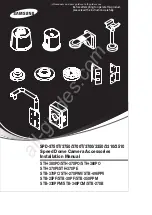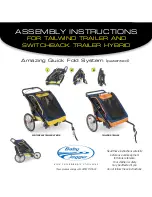
C 150 (E2) 06/2011
page 67/78
17.1.2 Packing inside the unit, equipment
Packing element
Material
Disposal
Door protection
PE foam
Plastic recycling
Packing box equipment
Cardboard
Paper recycling
Insulating air cushion foil
PE foil
Plastic recycling
Paperboard
Cardboard
Paper recycling
Silica gel bag
Paper with silica gel
Do not open. Dispose of with
normal waste
Cardboard Paper
recycling
Sensor packing
PE foam
Plastic recycling
Bag for operating manuals
PE foil
Plastic recycling
If recycling is not possible, all packing parts can also be disposed of with normal waste.
17.2 Decommissioning
•
Turn off the main power switch (2). Disconnect the unit from the power supply.
•
Turn off the CO
2
supply. Remove the gas connection.
•
Let the inner chamber sufficiently cool down before removing any parts.
•
The water pan must not remain filled while the incubator is out of operation. Otherwise condensation
may occur on the inner surfaces, as well as in the injection and suction nozzle of the CO
2
sensor
compartment. If condensation formation has occurred, drops of condensate would leak from the
openings of injection and suction nozzle of the CO
2
sensor. In this case, clean and dry the incubator
running at 37 °C /
98.6 °F
with doors open for at least one hour before loading it with samples.
BINDER recommends performing a hot air sterilization of the unit before commissioning.
•
Temporal decommissioning: See indications for appropriate storage, chap. 3.3.
•
Final decommissioning: Dispose of the unit as described in chap. 17.3 to 17.5.
When restarting the unit, please pay attention to the corresponding information in chap. 6.2.
17.3 Disposal of the unit in the Federal Republic of Germany
According to directive 2002/96/EC of the European Parliament and of the Council on waste electrical and
electronic equipment (WEEE), BINDER devices are classified as “monitoring and control instruments”
(category 9) only intended for professional use“. They must not be disposed of at public collecting points.
The CO
2
incubator C 150 bears the symbol for the marking of electrical and electronic
equipment manufactured / placed on the market in the EC after 13 August 2005. It must be
disposed of in separate collection according to the directive 2002/96/EC on waste electrical
and electronic equipment (WEEE) and German national law for electrical and electronic
equipment (Elektro- und Elektronikgerätegesetz, ElektroG). WEEE marking: crossed-out
wheeled bin with solid bar under. A significant part of the materials must be recycled in
order to protect the environment.
At the end of the device’s service life have the device disposed of according to the German national law
for electrical and electronic equipment (Elektro- und Elektronikgerätegesetz, ElektroG) from 23 March
2005, BGBl. I p. 762 or contact BINDER service who will organize taking back and disposal of the unit
according to the German national law for electrical and electronic equipment (Elektro- und Elektronik-
gerätegesetz, ElektroG) from 23 March 2005, BGBl. I p. 762.
Содержание APT.line C 150
Страница 75: ...C 150 E2 06 2011 page 75 78 18 9 Dimensions C 150...
Страница 79: ......













































